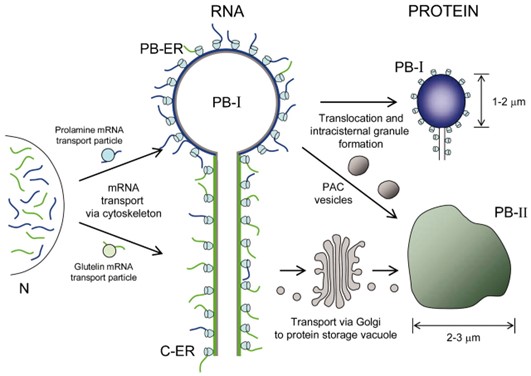Seed storage proteins are stored in two different cellular structures; one is the protein body (PB), and the other is the protein storage vacuole (PSV). The protein body is highly specialized protein storage organelles in grain seeds. PB formation in seeds begins in the endoplasmic reticulum (ER). Depending on the plant species, PBs remain in or come out of the ER, bypassing the Golgi and eventually entering the protein storage vacuole.
Lifeasible is committed to helping our customers achieve effective and successful research. We provide convenient and guaranteed functional analysis of the protein body, including storing prolamins via protein-protein interactions, mRNA sequences, and autophagy. In addition, we deliver reliable results and reports on time to our customers worldwide.
 Fig.1. Schematic representation of RNA-dependent seed storage protein targeting in developing rice endosperm. (Crofts AJ. et al., 2004)
Fig.1. Schematic representation of RNA-dependent seed storage protein targeting in developing rice endosperm. (Crofts AJ. et al., 2004)
Lifeasible has extensive experience and expertise in plant science. We are committed to providing you with timely and high-quality deliverables. At the same time, we guarantee the cost-effectiveness, completeness, and simplicity of the report. If you are interested in our services or have any questions, please feel free to contact us or make an online inquiry.
Reference
Lifeasible has established a one-stop service platform for plants. In addition to obtaining customized solutions for plant genetic engineering, customers can also conduct follow-up analysis and research on plants through our analysis platform. The analytical services we provide include but are not limited to the following:
STU-CRISPR System Improves Plant Genome Editing Efficiency
April 19, 2024
Application of Exosomes in Facial Beauty
April 12, 2024